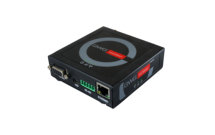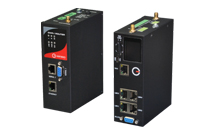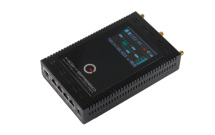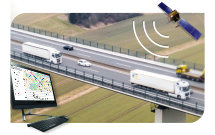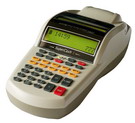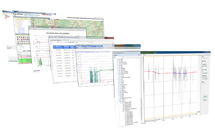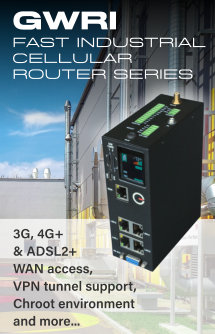 About us
About us
 Products and services
Products and services
- M2M products and solutions
Geneko GWG Gateway is compact and cost effective communications solution that provides cellular capabilities for fixed and mobile applications such as data acquisition, smart metering, remote monitoring and management.
GWR-I Industrial Cellular Router Series represents a group of industrial graded routers specially designed for expansion of existing industrial networks, remote telemetry and data acquisition in harsh environments.
GWR Cellular Router Series is designed to provide connectivity over 3G/4G LTE networks especially for customers who require a power supply from 9 to 36 VDC. It meets the requirements of the most demanding M2M applications.
GWR High Speed cellular router series represents a group of high speed routers specially designed for those applications where speed data transfers up to 100 Mbps over GSM network are required.
- Tracking products and solutions
Fox Automatic Vehicle Location (AVL) devices give you real-time control of your mobile resources, so you can: locate, track, communicate as well as monitor vehicle statuses and important events. Combining GPS data with GSM communications and Internet technologies, the Fox devices provide higher efficiency, better service...
Fox FMS is a complete solution for efficient fleet management and consists of AVL devices Fox, FMS server, client workstations and communication infrastructure.
We offer mobile positioning services by GSM/GPRS network and Internet enabling the user to track and control his vehicles at any moment. Combining GPS data with GPRS and Internet, our FOX FMS provide satellite vehicle locating and monitoring of its status, measurement and detection of important events.
Additional equipment enables monitoring of vehicle statuses, measurements and detection of important events or connectivity to vehicle FMS enabling the user to control his vehicles at any moment.
- Fiscal products and solutions
Geneko SuperCash Fiscal Cash Registers enable 2G/3G/4G communication with remote Tax Authority or customer server by integrated or external GSM module. They support FCR functions and centralized management.
Geneko FiscalPrint FP200 and FP60 are fiscal POS printers based on thermal technology designed for all types of shops and supermarkets, which use PC or POS systems. These devices has integrated GPRS terminal for wireless connection to Tax Administration or customer remote server.
Geneko Sales Data Controller (SDC) provides connectivity of cash register (ECR), POS printer or POS system to Tax Authority server using internet or cellular network. SDC is the core of VAT collection system.
Application and communication programs intended for users of fiscal devices in order to allow easier editing of data stored in devices memory, reading turnovers as well as remote device management.
- Other products
Geneko Spark GPRS terminal is designed to provide wireless access to any manageable device and enables automatic data management and monitoring of all devices in customer network.
GenAir mPCIe LTE module is based on Cinterion’s PLS8-E in a standard Mini PCI Express form factor. It is high-quality engineered LTE module, designed for industrial-grade M2M applications.
Our solutions are highly adaptable and our development team can provide reliable and cost-effective system designs that meet the varying customer demands.
- M2M products and solutions
 Knowledge base
Knowledge base
 Support
Support
 Where to buy
Where to buy Contact
Contact
LATEST NEWS
SCADA – PLC modbus communication
Connecting PLC in industrial environment with SCADA systems using Software Defined Wide Area Networks (SD-WAN), GWG 3G/4G Gateway and mobile technologies. In this project, we used SIM cards from one of the global mobile providers with coverage in many countries and its SD-WAN solution based on the cloud because it is easy to deploy and user friendly with a high level of automation.
Geneko Remote Access solutionsIn a situation caused by extraordinary circumstances, it is necessary to ensure continuity of business and provision of services. In such situation, it is very important to provide your employees with safe and efficient way to work remotely from home and access company resources.
M2M Technology
M2M or Machine-To-Machine Technology is one of the fastest growing technologies nowadays. It represents wired and wireless transmission, analysis and data processing between varieties of devices via communication network. It is basically about connecting machines – industrial equipment, vehicles, ATMs, compressors, etc. – to the Internet enabling them to communicate to each other autonomously. Simplified, M2M Technology means automatic exchange of data between machines and devices.
What is M2M system and how is it functioning?
M2M system is a sum of technologies that enable devices to communicate to each other over a wired or wireless network. The core of the system is to collect various data from the sensors and to transmit them back in order for some action to occur.
Even an ordinary M2M system with a few components can be very complex. That depends of the variety of customer’s needs. But most of these systems can be ungrouped into five basic components: (1) the controlled device on the remote site, (2) remote terminal unit, (3) communication network, (4) data processing unit and (5) user interface for data accessing and editing.

M2M system - how it works
M2M technology is in rapid expansion because it mostly relies on wireless communication which is provided by the existing, already developed global telecommunication infrastructure, i.e. GSM, UMTS, HSPA, HSDPA and LTE networks which provide communication services available in the extremely difficult accessible spots. This technology is used by “intelligent” devices, like GSM gateways, cellular routers or GPRS terminals that can be programmed in order to adjust to various conditions of the machines and react adequately.
Benefits
-
Permanent connectivity with devices on remote sites
stay in touch with all of your remote machines at all times. No matter is it a holiday time, weekend, day or night – you can access your device whenever you want. -
Remote management of devices
very helpful in situations with restricted access to a facility or when it is very hard to reach the remote site easily for an on-site intervention on equipment. -
Real-time monitoring of remote systems and identifying critical situations
monitoring current condition of devices statuses and their environment has never been easier. It is very useful in automatic monitoring of device statuses and important events, reporting and immediate alarming about critical statuses and emergency and more. Also, one of the main advantages of M2M technology is an ability to define custom criteria for remote device setup and management. -
Optimization and automation of processes
performing an adequate action based on a critical situation is one of the key roles of M2M system. If you want to set a task like monitoring device’s statuses and defined parameters, measurement and detecting important events or sending command via SMS – M2M technology does it like a breeze.
The principle of M2M connectivity is the synergy: the system itself is greater than sum of its parts. The key decision in making M2M system is to pick right components and put them in the right place. The key value is that machines communicate between themselves, evaluate data automatically and create added value for the users increasing their efficiency and productivity.
Geneko M2M Products and Solutions

Geneko has wide portfolio of products that utilize M2M technologies. GWR/GWG Cellular Routers and Gateways are flagship products of diversified production portfolio. Many successful implementations of the routers and other devices proved their reliability in various situations.
Geneko GWR Cellular Router Series operate in ATMs, video surveillance, smart energy metering ad more. GWR-I Industrial Cellular Router Series is mainly used in remote telemetry of gas, oil and water supply systems. GWG 3G/4G Gateway Series provides cellular capabilities for fixed and mobile applications such as data acquisition, smart metering, remote monitoring and management. These three series offer low transmission delay and high data rates among many advanced features such as: dual SIM card support, WAN settings, Serial-to-IP feature, user-friendly web interface and more. Geneko High Speed Cellular Router Series with 4G LTE and Wi-Fi features increases efficiency and improve the experience of using the devices.
Geneko GPRS Spark Terminal is general purpose M2M device widely used for data acquisition. Its scope of business is mainly data acquisition from point of sales and data transfer to Tax Authorities, as well as control of gas stations, traffic signalization and other services in electric power industry, etc.
Sales Data Controller represents a robust solution designed to provide connection of Electronic Cash Registers to Tax Authority server using cellular network.
Beside before mentioned devices, Geneko has several more M2M products for data acquisition such as Fox Satellite Vehicle Tracking Devices and FP200 Fiscal POS Printer with built-in connectivity via GSM network and many more.
Read more:
Copyright © Geneko 2025 | website by Urban dizajn
